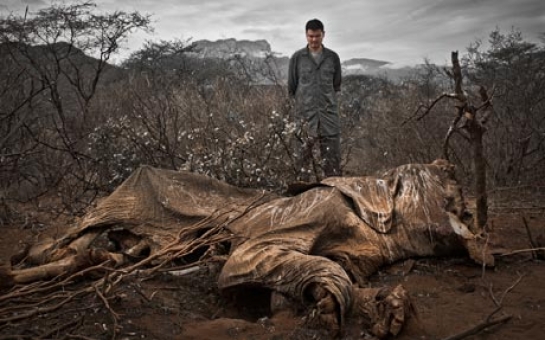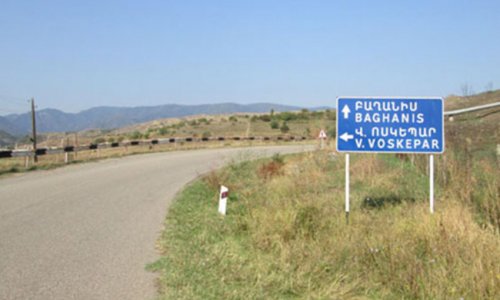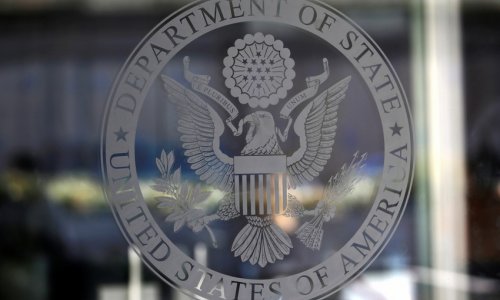Arguably the biggest story of 2013 was wildlife crime, which escalated from a conservation issue to an international security threat. Driven by rising demand for ivory from east Asia, it has doubled over the past five years into a global trade worth $10bn, threatening political and economic stability in central Africa.This month there were warnings that Africa could lose one-fifth of its elephants in the next decade if the continent's poaching crisis is not stopped. By the end of September, a record 704 rhinos had been killed by poachers in South Africa and 47 in Kenya this year. Figures showed two-thirds of forest elephants had been killed by ivory poachers in past decade.Some high-profile massacres hit the headlines, with 86 elephants – including 33 pregnant females– killed in less than a week in Chad, 26 elephants slaughtered at a wildlife-viewing site in the Central African Republic and 80 poisoned at a water hole in Zimbabwe.While conservation groups looked to technology such as surveillance drones and GPS trackers to aid their efforts, park rangers lost lives and faced corruption fighting a one-sided war against increasingly militarised and organised gangs of poachers sometimes linked to terrorist groups like Al-Shabaab.With Prince Charles and his son the Duke of Cambridge calling for a "war on poachers", UK prime minister David Cameron announced he would host the highest level global summit to date on combating the illegal wildlife trade. In the US, the Obama administration said it would destroy all 6m tonnes of its ivory stocks and the Philippines crushed 5m tonnes of seized ivory beneath industrial rollers.

In 2013 the weather played a big part for British wildlife, with a wet winter, a "delayed spring" and hot summer affecting both flora and fauna. As cold spell continued into April, conservationists warned hedgehogs, birds, insects, reptiles and frogs were all struggling.
In May, the National Trust embarked on a census to discover whether puffin numbers had plummeted after a year of extreme weather, and the UK barn owl population was reported to have suffered its worst breeding season for more than 30 years after a run of extreme weather events. The erratic weather had a knock-on effect later in the year with species like wasps and butterflies being seen a month later than usual.

Decline was a word used frequently throughout 2013 when it came to talking about wildlife in the UK and around the world. The significant State of Nature report, published in May, found that more than half of UK wildlife species are in decline. In October an audit of more than 200 native UK species – including birds, bats, moths, butterflies, hares and doormice – showed that priority species have declined on average by 58% since 1970.Europe's grassland butterfly population has plummeted in the past two decades, new research published in 2013 showed, with a near halving in the numbers of key species since 1990. And after the miserable summer of 2012, there were fewer butterflies in British skies in 2013 than for thousands of years, leaving several species in danger of extinction from parts of the country. British moths are also in calamitous decline, a major report showed in February, declining in southern Britain by 40% over 40 years.In British waterways, a new five-year survey found that the water vole – the creature immortalised as Ratty in The Wind in the Willows – is vanishing from the British countryside, with the population slumping by more than one–fifth.
More than 4,000 birds of at least 18 species washed up dead or were affected by a sticky substance covering beaches from Cornwall to Dorset in two separate incidents in January and April this year.

There were mixed fortunes for bird populations in 2013. In December, the authoritative State of the UK's Birds report concluded that some of Britain's most familiar countryside birds have plummeted in numbers since the 1990s, with some species disappearing altogether from parts of the UK. The report drew heavily on the British Trust for Ornithology's mammoth volunteer-led project the Bird Atlas 2007-11, published a month earlier. The new atlas of 1,300 maps shows the patterns of distribution, abundance and change among 296 bird species in Britain and Ireland.In October, statistics showed the number of wild birds in the UK was still falling, and among garden birds, starlings, house sparrows and other threatened species suffered further declines.The decline in birds of prey continued, with the hen harrier failing to breed in England this summer for the first time since the 1960s. The species now stands on the brink of extinction, with rogue grouse moor gamekeepers blamed for their decline.Cases of the illegal persecution of British birds is continuing to rise, a December report from the RSPB showed, with 208 reports of the shooting and destruction of birds of prey in 2012. It is hoped legal changes that will be debated in parliament next year will introduce stricter penalties for wildlife crimes.
The fortunes of the house sparrow seemed to be changing in 2012, however, with figures in September showing that the decline in their numbers appears to have levelled off.

In April, the European Union suspended the use of three neonicotinoid pesticides linked to serious harm in bees, despite the opposition of the UK ministers. In June the UK government launched an "urgent" review of the crisis facing bees and other pollinators in the UK and pledged to introduce a national pollinator strategy.

In August, the controversial badger cull went ahead – amid protests – in Gloucestershire and west Somerset, in two pilot schemes attempting to stop the spread of bovine tuberculosis in cattle. Despite the cull being extended, it failed to reach its target, meaning it was "very likely" that the risk of tuberculosis in cattle had gone up, not down, according to an expert.

British trees were under attack in 2013 from a variety of threats including sweet chestnut blight, the oak processionary moth caterpillar, and one year after it broke out in the UK, ash dieback disease. Britain's 80 million ash trees remain at deadly risk from ash dieback caused by Chalara fraxinea, a virulent fungal disease that has swept across Europe. Latest figures from the Forestry Commission reported a total of 613 sightings in nurseries, plantations and established woodland around the UK.In October the St Jude storm that swept across England was estimated to have killed around 10 million trees.Internationally, destruction of the Amazon rainforest increased by almost one-third in the past year, reversing a decade-long trend of better protection for the world's greatest rainforest.But almost 200,000 hectares of Tasmania's old growth forest were world heritage-listed in 2013, bringing hope that a three-decade fight between environmentalists, politicians and loggers is over.Internationally, the Cites international wildlife summit in Bangkok awarded protection against the finning trade to five shark species, but failed to halt the polar bear trade. Iceland resumed its commercial hunting of fin whales after a two-year suspension.
In November, the IUCN published its annual "red list". The latest update of endangered species showed worrying declines for the okapi, the white-winged flufftail, the red belly toad, Caribbean skinks and the martial eagle. Another study published by the IUCN this year showed that nearly one in five of the world's estimated 10,000 species of lizards, snakes, turtles, crocodiles and other reptiles are threatened with extinction.

Talks to create the world's two largest marine reserves in the Antarctic broke down in November for the third time in a year, with conservationists branding Russia a "repeat offender" for blocking an international agreement. In the UK, ministers named 27 new marine conservation zones in November to protect seahorses, coral reefs, oyster beds and other marine life – four less than ministers proposed and far short of the 127 zones recommended by the government's own consultation.
A hard-fought battle over European Union fisheries policy saw the ending of the wasteful practice of fish discards, with an agreement signed to gradually phase out the practice – where unwanted fish is thrown back into the sea – from 2015 to 2019. The Fish Fight campaign by Hugh Fearnley-Whittingstall, the chef and Guardian food writer, was cited by the European commission as a key factor in winning the battle.

The discovery of new species made for some welcome respite from the bad news. In October, a leaf-tail gecko, a golden-coloured skink and a boulder-dwelling frog were three new species discovered in a "lost world" in northern Queensland, Australia. In Suriname, scientists discovered 60 species new to science, including a chocolate-coloured frog and a tiny dung beetle less than 3mm long. A purring monkey, a vegetarian piranha and a flame-patterned lizard were among more than 400 new species of animals and plants that have been discovered in the past four years in the Amazon rainforest, conservationists say.And there were other good news stories. Sightings of the variable harlequin toad (Atelopus varius) – thought to be extinct in Costa Rica – led researchers to believe other isolated fragments of Central America's disappearing amphibians may survive in regions scourged by the deadly chytrid fungus disease.One of the world's most elusive wild cats, the Bornean bay cat (Pardofelis badia) was captured on camera in a heavily logged area of Borneo rainforest together with four other endangered species, suggesting that some wildlife can survive in highly disturbed forests.In September, a landmark project to reintroduce the extinct short-haired bumblebee (Bombus subterraneus) to the UK celebrated its first milestone after experts confirmed that queens had nested and produced young.Spain's endangered Iberian lynx was brought back from brink of extinction thanks to an imaginative conservation programme that has brought hunters, farmers and the tourist industry under its wing.And beaver, bison and eagles were named among the species that have made a successful comeback in Europe in the past 50 years, according to a major survey published in September.(theguardian.com)
ANN.Az











